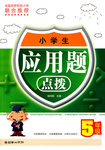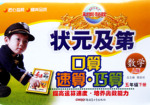题目内容
A recent study of ancient and modern elephants has come up with the unexpected conclusion that the African elephant is divided into two distinct (不同的) species
The discovery was made by researchers at York and Harvard universities when they were examining the genetic relationship between the ancient woolly mammoth and mastodon to modern elephants—the Asian elephant, African forest elephant and African savanna elephant
Once they obtained DNA sequences (序列) from two fossils (化石),mammoths and mastodons the team compared them with DNA from modern elephants. They found to their amazement that modern forest and savanna elephants are as distinct from each other as Asian elephants and mammoths.
The scientists used detailed genetic analysis to prove that the African savanna elephants and the African forest elephants have been distinct species for several million years. The divergence of the two species took place around the time of the divergence of Asian elephants and woolly mammoths. This result amazed all the scientists.
There has long been debate in the scientific community that the two might be separate species but this is the most convincing scientific evidence so far that they are indeed different species.
Previously, many naturalists believed that African savanna elephants and African forest elephants were two populations of the same species despite the elephants’ significant size differences. The savanna elephant has an average shoulder height of 3.5metres while the forest elephant has an average shoulder height of 2.5metres. The savanna elephant weighs between six and seven tons, roughly double the weight of the forest elephant. But the fact that they look so different does not necessarily mean they are different species. However, the proof lay in the analysis of the DNA.
Alfred Roca, assistant professor in the department of Animal Sciences at the University of Minois, said, “We now have to treat the forest and savanna elephants as two different units for conservation purpose. Since 1950 all African elephants have been conserved as one species. Now that we know the forest and savanna elephants are two very distinct animals, the forest elephant should become a bigger priority (优先)for conservation purpose .”
1.
One of the fossils studied by the researchers is that of ________.
A. the Asian elephant B. the forest elephant
C. the savanna elephant D. the mastodon elephant
2.
The underlined word “divergence” in paragraph 4means “________”
A. evolution B. exhibition C. separation D. examination
3.
The researcher’s conclusion was based on a study of the African elephant’s ____________
A. DNA B. height C. weight D. population
4.
What were Alfred Roca’s words mainly about?
A. The conversation of African elephants.
B. The purpose of studying African elephants
C. The way to divide African elephants into two units
D. The reason for the distinction of African elephants
5.
Which of the following can be the best title for the passage?
A. Naturalist’s Belief about Elephants. B. Amazing Experiment about Elephants
C. An Unexpected Finding about Elephants D. A Long scientific Debate about Elephants
1.D
2.C
3.A
4.A
5.C
【解析】
1.fossils 定位,找到第三段第一句,有两种fossils,mam和mas,选项D
2.文中divergence of the two species指代前文the Ase and the Afe have been distinct species, divergence与distinct同义替换,对应选项C
3.conclusion, based on定位,找到倒数第二段最后一句lay in 与based on 同义替换,答案:A
4.AR定位,找到倒数第一段,从AR的话中,第一句for conservation purpose, 最后一句for conservation purpose确定A
5.文章首句点明全文主旨,答案:C

 精英口算卡系列答案
精英口算卡系列答案 应用题点拨系列答案
应用题点拨系列答案 状元及第系列答案
状元及第系列答案A recent Living Social survey showed that Americans may live up to their poor reputation while travelling abroad. But what’s more surprising is that many of those surveyed self-identified themselves as ‘ugly’ Americans and the world’s worst travelers.
Those in the U.S. ranked themselves as the worst travellers by a shocking 20 per cent, followed by 15 per cent saying the Chinese were the most substandard tourists.
Americans topped the list as being the worst-behaved travelers in a survey of 5,600 respondents, 4,000 of whom were Americans. Other respondents were in Australia, Canada, Ireland and the United Kingdom. But even American respondents considered their compatriots(同胞) as the worst travelers from a list of 16 nationalities.
Canadians and Australians also put Americans in the No. 1 spot. Irish respondents pointed to U.K. residents and U.K. respondents gave Germans the nod. On the other hand, 37% of Americans opted for "none of the above" in answer to the worst-tourists question, displaying more tolerance and open-mindedness than the other nationalities.
Other survey questions had respondents admitting pilfering from hotels. Four in ten U.S. survey-takers said they’d stolen something – mostly towels (28%) and bathrobes (8%). Other popular pinched items included pillows, remote controls, Bibles and sheets.
Not surprising is that Americans have less time off from work than other nationalities. Americans reported getting 16 days off, compared with 28 days for the Irish, 27 days for Australians, 23 days for U.K. workers; and 21 days for Canadians.
In the travel mishaps department, the most common travel disaster reported by Americans was lost luggage on an airline (21%); bad weather (21%); and getting very lost (16%).
As for places Americans most want to see, Disney World and Las Vegas made the top 10, but they weren't at the top of the heap. And New York didn't make the cut.
1.What percentage of American respondents is in the survey?
|
A.20 % |
B.15% |
C.71% |
D.37% |
2.The underlined word “pilfering” in Para. 5 most probably means ________.
|
A.taking |
B.bringing |
C.stealing |
D.borrowing. |
3.According to the survey, what kind of things are most taken away by Americans?
|
A.towels and pillows |
|
B.bathrobes and remote controls. |
|
C.towels and Bibles |
|
D.bathrobes and towels. |
4.What’s the best title of this passage?
|
A.Chinese were announced as the world’s worst travellers. |
|
B.The global worst travellers were announced. |
|
C.Disney World is the best destination to Americans. |
|
D.European travellers were the best in the world |
